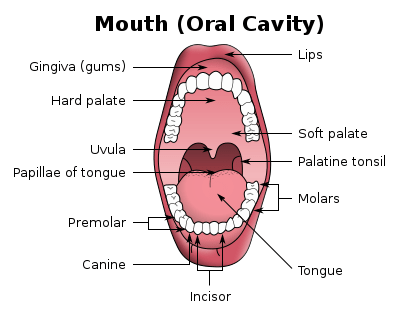
What is the function of incisor teeth?
Answer
397.2k+ views
Hint: In humans, primary teeth start to erupt through gums when a baby turns more than 6 months old. The teeth which are in the front of the mouth are incisors. It has a flat edge designed for shearing or cutting of food.
Complete answer:
Incisors are the bigger teeth in herbivores (the plant eater) and in omnivores (plant and meat eaters). This is because they help by biting off pieces of food before it is chewed with the help of back teeth.
However, in carnivores which are pure meat eaters, they have relatively smaller incisors because they have more pointed canine which helps them to tear meat and shear the bones.
Anatomy of incisor: these are two in number, and are maxillary teeth in the centre in the front of the upper jaw and are the most prominent teeth in the human mouth. They pair with mandibular central incisors in the lower jaw, and together help in motion for biting of food.
Talking about the mandibular incisor’s teeth, they are central and smallest human teeth. Their shape is relatively narrow, and is little longer as compared to toothier winder maxillary counterparts.
Both the pairs have central location, and are flat. They are blade-like which enables them to slice through food as it enters the mouth.

Note:
Children lose their first primary or temporary teeth between the age group of 6 to 12 year old. After that the final and permanent teeth appear. Talking about types of teeth, there are four sets. Molars, premolars, incisors and canines. each of them has a different purpose to support in breaking down the food piece inside the mouth.
Complete answer:
Incisors are the bigger teeth in herbivores (the plant eater) and in omnivores (plant and meat eaters). This is because they help by biting off pieces of food before it is chewed with the help of back teeth.
However, in carnivores which are pure meat eaters, they have relatively smaller incisors because they have more pointed canine which helps them to tear meat and shear the bones.
Anatomy of incisor: these are two in number, and are maxillary teeth in the centre in the front of the upper jaw and are the most prominent teeth in the human mouth. They pair with mandibular central incisors in the lower jaw, and together help in motion for biting of food.
Talking about the mandibular incisor’s teeth, they are central and smallest human teeth. Their shape is relatively narrow, and is little longer as compared to toothier winder maxillary counterparts.
Both the pairs have central location, and are flat. They are blade-like which enables them to slice through food as it enters the mouth.

Note:
Children lose their first primary or temporary teeth between the age group of 6 to 12 year old. After that the final and permanent teeth appear. Talking about types of teeth, there are four sets. Molars, premolars, incisors and canines. each of them has a different purpose to support in breaking down the food piece inside the mouth.
Recently Updated Pages
Can anyone list 10 advantages and disadvantages of friction

What are the Components of Financial System?

How do you arrange NH4 + BF3 H2O C2H2 in increasing class 11 chemistry CBSE

Is H mCT and q mCT the same thing If so which is more class 11 chemistry CBSE

What are the possible quantum number for the last outermost class 11 chemistry CBSE

Is C2 paramagnetic or diamagnetic class 11 chemistry CBSE

Trending doubts
10 examples of friction in our daily life

The correct order of melting point of 14th group elements class 11 chemistry CBSE

Difference Between Prokaryotic Cells and Eukaryotic Cells

One Metric ton is equal to kg A 10000 B 1000 C 100 class 11 physics CBSE

What is the specific heat capacity of ice water and class 11 physics CBSE

State and prove Bernoullis theorem class 11 physics CBSE




